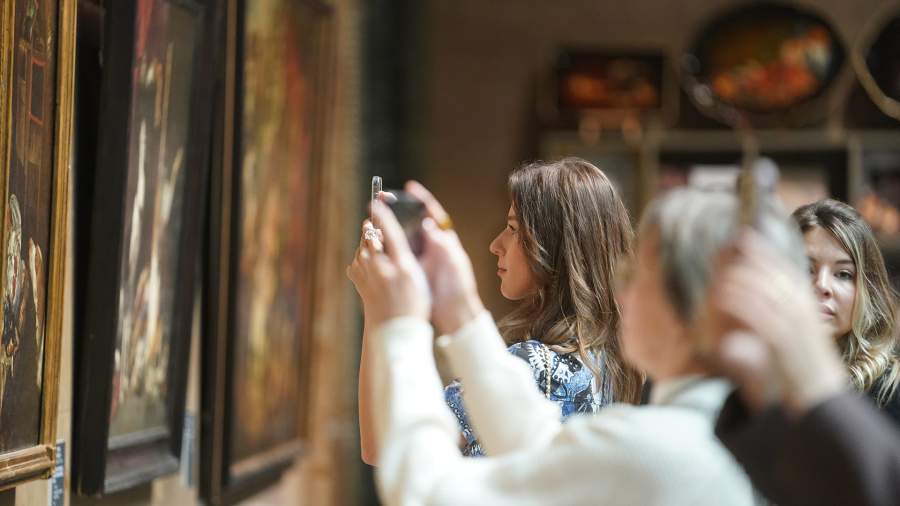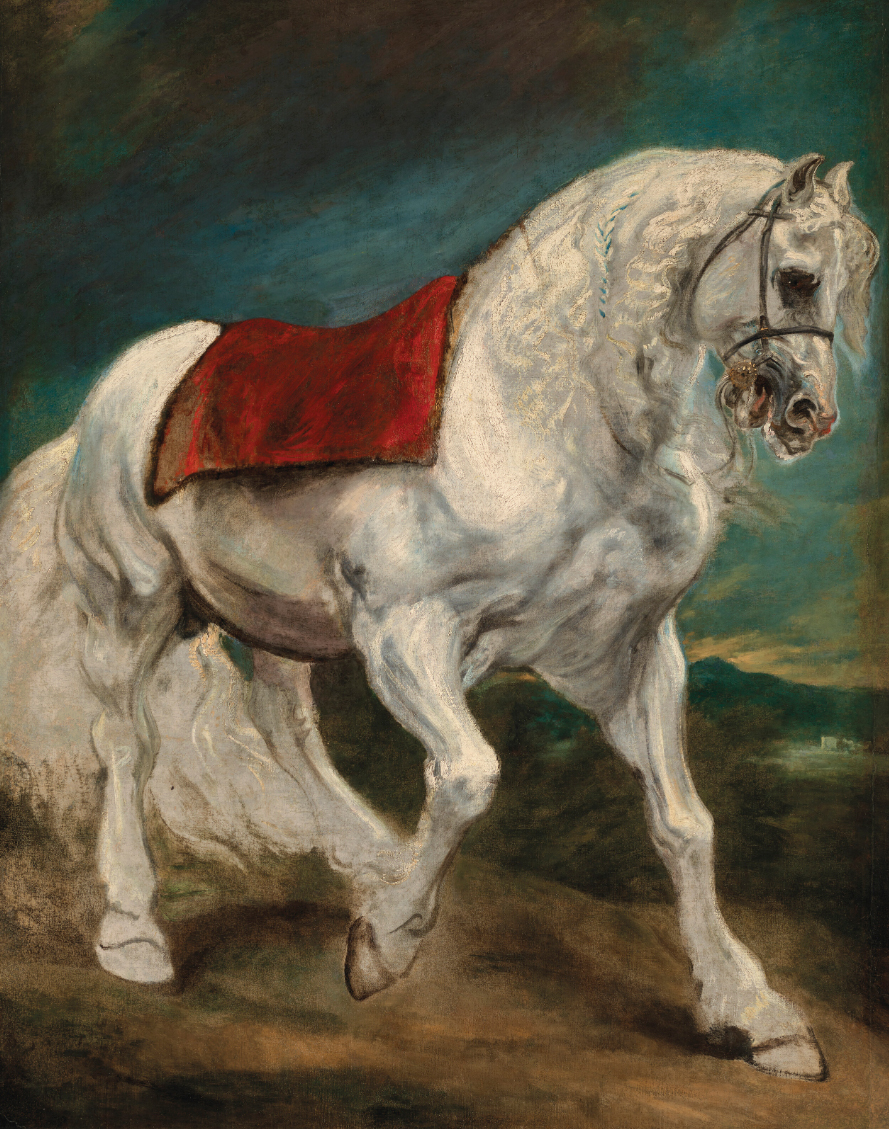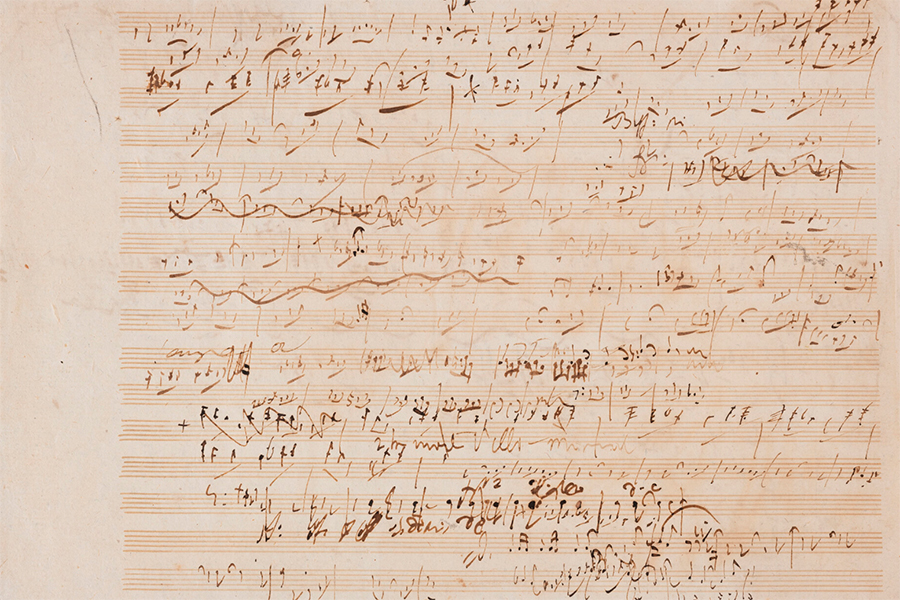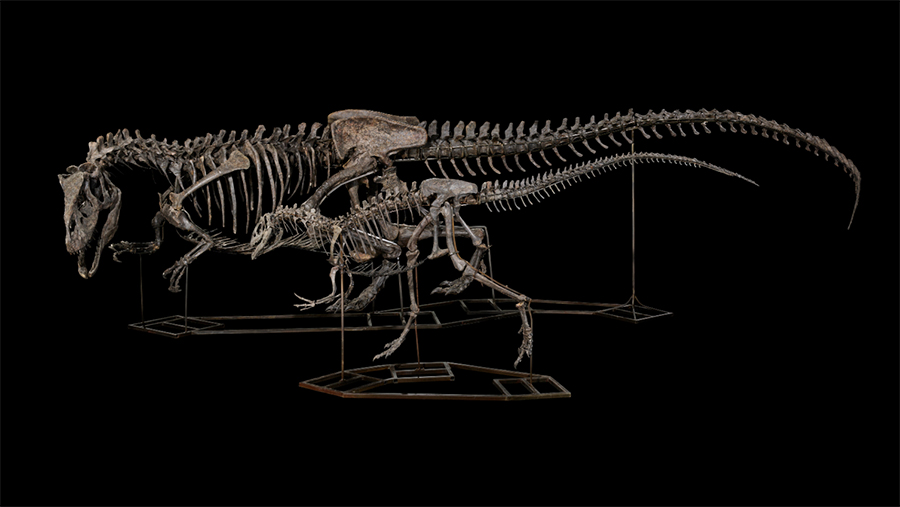The horse went: Van Dyck's equestrian depiction and the dinosaur family

Double-sided painting by Antonis van Dyck for $3 million, a manuscript of the Russian quartet Ludwig van Beethoven, the skeletons of two dinosaurs (an adult and a child) and a huge work by Oleg Tselkov for 40 million rubles. Although the peak auction season is over (traditionally it falls on November), in the last month of the year at the auction in Russia and abroad will not do without bright lots. Mostly it is painting, but not only. "Izvestia" chose the most interesting.
Double-sided painting Van Dyck
Perhaps the most high-profile work from the upcoming world auction of paintings will be presented at Christie's works of the old masters (December 3). We're talking about the top lot: a double-sided painting by Antonis van Dyck, a 17th-century Flemish painter and pupil of Rubens. Leaving Flanders for England, Van Dyck became court painter to King Charles I Stuart, later beheaded by Oliver Cromwell, and painted many portraits of the monarch himself, his family and the English aristocracy.

Van Dyck's works (mostly small sketches) occasionally appear at auction, but this lot is special for two reasons. First, after clearing on the back of the canvas managed to find the author's image, not associated with the front side. And secondly, the discovered painting is a landscape. And to date, this is the only known work by Van Dyck in oil in this genre.
As for the front side, we see here an excellent image of a horse without a rider. The auction house rightly points out the parallel with the famous equestrian portrait of Charles V, kept in the Uffizi.
For such a rarity estimeit £2-3 million seems very modest, but it can be assumed that in the process of bidding the price will seriously increase.
A draft of Beethoven's Russian Quartet
Manuscripts of famous people are regularly sold at auction, but it has been a long time since there has been such an abundance of autographs of great composers in a single auction. On December 11, Christie's will be selling sheet music manuscripts by Ravel, Verdi, Wagner, Mendelssohn and other music classics. These are mostly sketches of famous works, arrangements (for example, the author's transcription of the finale of Stravinsky's ballet "Firebird" for chamber orchestra) and individual parts. The draft of the slow movement of Ludwig van Beethoven's String Quartet Op.59 No.3 occupies a special place in this series. This is one of the so-called Russian quartets commissioned by Count Andrei Razumovsky, Ambassador of the Russian Empire in Vienna.

It is known that Beethoven worked very intensively on motifs and their development. There are whole notebooks of sketches showing how his musical thought was born and polished. In this case, however, he apparently used individual sheets: in particular, there are 25 disparate sketches for Razumovsky's quartets preserved in Vienna. However, apart from the Op.59 Quartet No.3, only two sheets belong to the specific part of the Op.59 Quartet: one is in the collection of the Royal College of Music in London and the other was sold at Christie's in 2012. The autograph up for auction is the third. And it differs markedly in musical material from the final appearance of the work. Its rarity and value for science is reflected in its considerable price: £100-150 thousand.
"Child with a Balloon" by Oleg Tselkov
The loudest and most expensive lot of domestic art in December will be presented by the Russian auction house Vladey. This is a huge, more than two meters in height (and almost two meters wide) canvas painter of the second half of the XX century Oleg Tselkov "Child with a balloon". The art of Tselkov, who passed away in 2021, is definitely at the peak of interest lately. Exhibitions show his work regularly, and market prices are trending upward.
But even among Tselkov's not cheap works, "Child with a Balloon" occupies a special place. And it's not just the size. More importantly, for the artist it is a completely atypical plot, which has no analogues in his work. And at the same time, the image is instantly read (it is immediately obvious - Tselkov!) and perceived in the context of his famous "muzzles". Depicting people, the painter made their faces, hands, figures exaggeratedly plump, cartoonishly coarse, as if deriving a new human breed, more adapted to the hardships of the world around them. The viewer, however, feels sorry for these characters, despite the brutality of their appearance.
The child in the painting paradoxically combines cheerful carelessness, lightness - and clumsiness. In addition, the painter plays with proportions: the child is half the size of the chair, and it is unclear whether he is so small, or whether the furniture is for giants (which, perhaps, this little man will one day become).
The special charm of the painting is the bright, almost glowing neon colors: poisonous fuchsia, mystical blue and aggressive red with shades. Having emigrated to France and immersed himself in the study of the techniques of the old masters, Tselkov began to experiment with glazes (multiple application of layers of paint, providing a specific refraction of light in oil) and in general strived for a different, more whimsical coloristic solution than before.
All of the above explains the frightening estimate of 30-40 million rubles.
Dinosaur skeletons
Well, and the most extravagant lot of the month, no longer related to art, but relevant to the history of our planet itself. At a live auction Christie's, scheduled for December 12, will be only two exhibits, but what! For $ 3-5 million is planned to sell the skeleton of Stegosaurus, and for $ 5-8 million - two skeletons of Allosaurus: a child and an adult. The second, of course, arouses more interest.
The skeletons of two males were assembled from individual bones found in the state of Wyoming(USA), and supplemented with 3D models of the lost parts. The adult specimen contains 143 original elements, while the child specimen contains 135. Thus, the length of the skeletons from skull to tail is more than 2.5 meters and about 3.5 meters respectively. Impressive!

Doubly strong it looks if we assume that in front of us father and son. Scientists, however, do not claim that the two dinosaurs are really related. Yes, and they were discovered at different times: the first - in the mid-1990s, the second - in 2002. But in 2017-2018, new excavations were carried out, allowing to complement the skeletons, and in 2022 they were mounted as they are sold today.
Allosaurs are the main predators of the Jurassic period. And they are where the popularization of the dinosaur theme in popular culture began. When we say "dinosaur," we think allosaurus. So there is no doubt that the Museum of Natural History, which will go broke on such a lot (or receive it as a gift from patrons), will replenish the exposition with a real hit for the widest public.
Переведено сервисом «Яндекс Переводчик»
